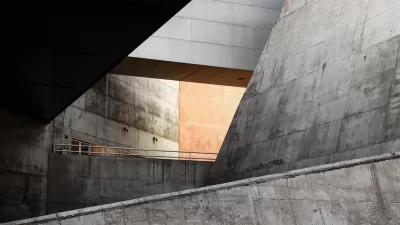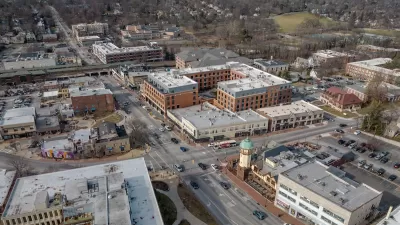Allison Arieff finds fault with the nation's uninspired conversation on infrastructure. When urban design projects have more emotional appeal, she argues, they can unify rather than divide.

According to Allison Arieff, infrastructure projects have largely lost the grand appeal they once possessed, both within the planning community and among the general public. "There is no awe. There are issues of structural integrity. There are mind-blowing cost overruns. Accidents. Sinkholes. Problems with bolts."
While projects like the Golden Gate Bridge once inspired the nation, "A century later, we've lost our collective faith in the power of great projects like the Golden Gate, not to mention our trust in the government to fix a pothole on time and on budget, let alone create an inspiring bridge. How can we restore that faith in possibility?" Arieff holds up Atlanta's BeltLine as one contemporary example of that faith.
She also takes aim at planners and other professionals for using too much uninspired jargon. "Yet engineers, planners and policy makers tend to focus on wonky stuff like percentage of parkland per person. They're awash in acronyms like V.M.T. (vehicle miles traveled), too reliant on planning terms like modeshare that don't resonate with the general public. These things may be useful in measuring the metrics of a city, but they sure don't get to the reasons people want to live there."
She concludes, "In an age of cost overruns, project delays, safety risks and the other, seemingly infinite obstacles to infrastructure, this all might sound awfully reductive, even naïve. But keeping our eye on what's possible is certainly as important as fixating on what isn't."
FULL STORY: What Happened to the Great Urban Design Projects?

Alabama: Trump Terminates Settlements for Black Communities Harmed By Raw Sewage
Trump deemed the landmark civil rights agreement “illegal DEI and environmental justice policy.”

Planetizen Federal Action Tracker
A weekly monitor of how Trump’s orders and actions are impacting planners and planning in America.

The 120 Year Old Tiny Home Villages That Sheltered San Francisco’s Earthquake Refugees
More than a century ago, San Francisco mobilized to house thousands of residents displaced by the 1906 earthquake. Could their strategy offer a model for the present?

In Both Crashes and Crime, Public Transportation is Far Safer than Driving
Contrary to popular assumptions, public transportation has far lower crash and crime rates than automobile travel. For safer communities, improve and encourage transit travel.

Report: Zoning Reforms Should Complement Nashville’s Ambitious Transit Plan
Without reform, restrictive zoning codes will limit the impact of the city’s planned transit expansion and could exclude some of the residents who depend on transit the most.

Judge Orders Release of Frozen IRA, IIJA Funding
The decision is a victory for environmental groups who charged that freezing funds for critical infrastructure and disaster response programs caused “real and irreparable harm” to communities.
Urban Design for Planners 1: Software Tools
This six-course series explores essential urban design concepts using open source software and equips planners with the tools they need to participate fully in the urban design process.
Planning for Universal Design
Learn the tools for implementing Universal Design in planning regulations.
Clanton & Associates, Inc.
Jessamine County Fiscal Court
Institute for Housing and Urban Development Studies (IHS)
City of Grandview
Harvard GSD Executive Education
Toledo-Lucas County Plan Commissions
Salt Lake City
NYU Wagner Graduate School of Public Service





























